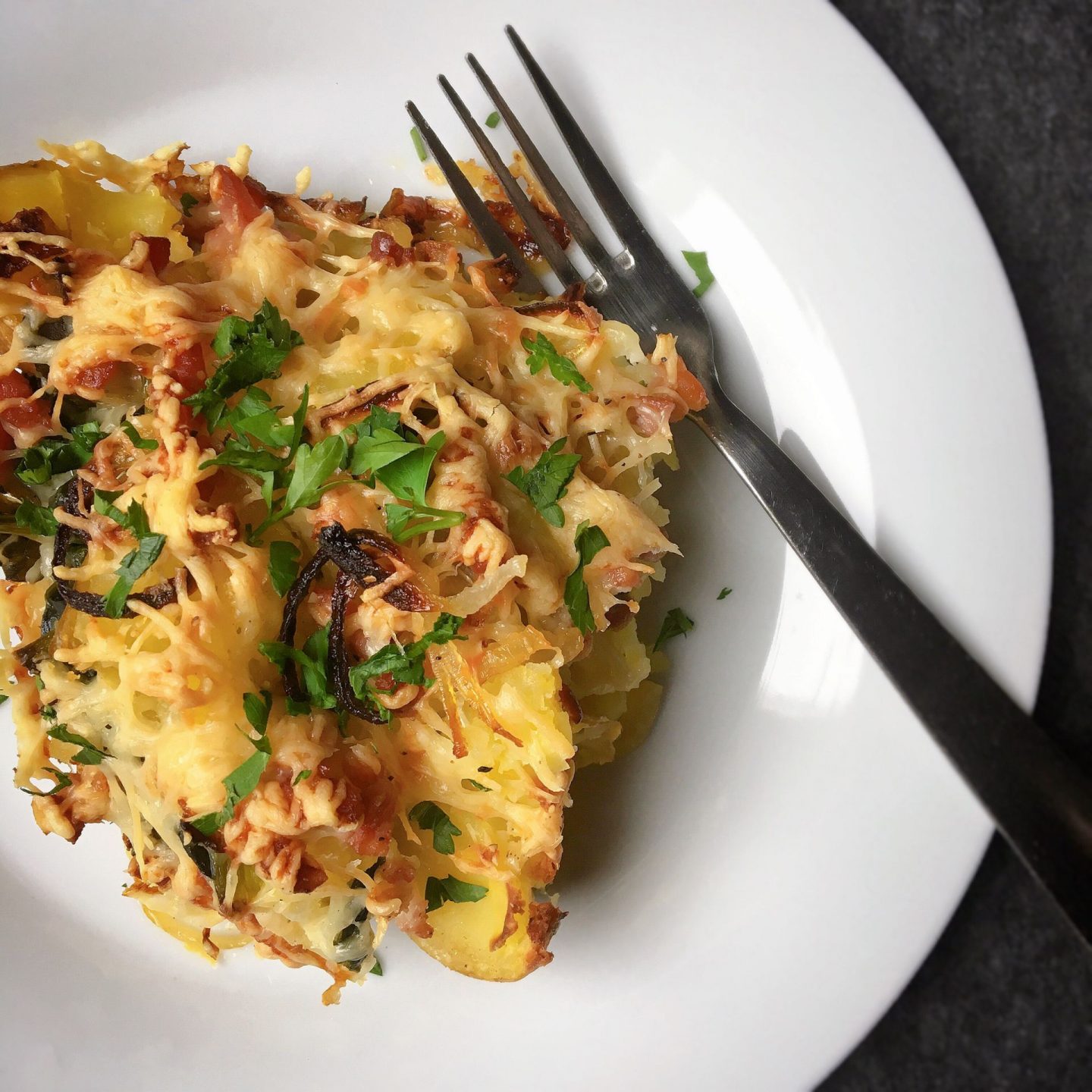Macaroni cheese is the ultimate comfort food, but I’m never in the right frame of mind to make it. This unconventional method is the answer – the pasta cooks in the milk, eliminating time and dirty pots. What’s not to love about that?

Once you’ve tried this method, you won’t look back. It’s best made with blue top or whole milk; but if you want to use trim, use 3 ½ cups of milk and omit the water. If you don’t drink cow’s milk, try this with goat milk. If you’re in Wellington, look out for Brooklyn Creamery goat milk, which comes from a farm up behind the wind turbine (I know, who knew?) It’s gorgeous milk, hyper-local and very fresh.
- 2 ½ cups milk
- 1 cup water
- 1 bay leaf
- 220g dried small pasta (like elbows, macaroni or small penne)
- A good grating of fresh nutmeg
- 1 ½ tbsp Dijon mustard
- 3 packed cups baby spinach
- 1 ½ packed cups grated tasty cheese
- 2 slices stale bread, crumbled or grated
Set the grill to medium-high and grease an ovenproof gratin dish (about 20 cm x 30 cm).
Put the milk, water, bay leaf, pasta and nutmeg in a large pot and set over medium heat. Bring to a gentle simmer and cook, stirring frequently, for 10-15 minutes until the pasta is al dente. It will seem at the start that the sauce will never thicken, but keep stirring, I promise it will happen all of a sudden.
Remove from the heat and add the mustard, baby spinach and most of the grated cheese. Stir well to combine and tip into the prepared dish. Scatter the grated bread and the rest of the cheese over the top.
Put the dish under the grill and cook for 5-10 minutes, until golden and bubbling. Serve immediately. Serves 3-4.









